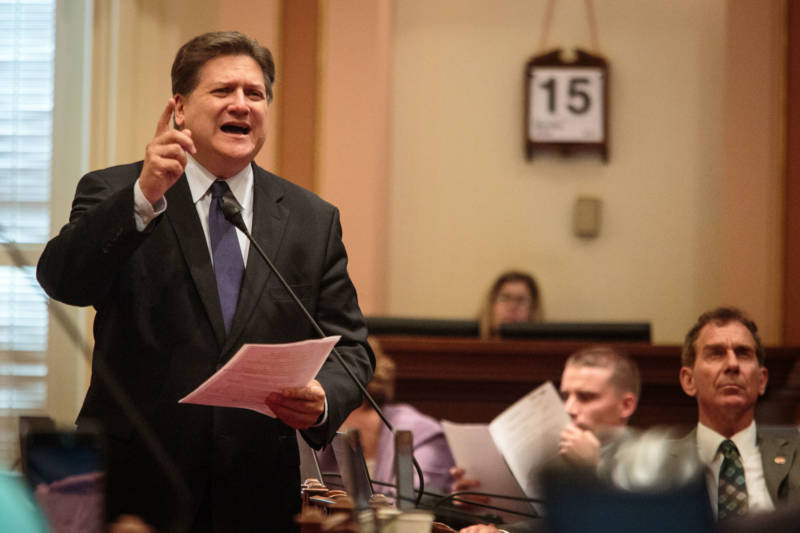When California passed a law last year aimed at eliminating cash bail in the state, the bail industry jumped into action, gathering enough signatures to put the question before voters as a referendum in 2020.
That referendum prevents Senate Bill 10 from taking effect until voters weigh in.
But in the meantime, California’s pretrial system is continuing to evolve as supporters of bail reform push a slew of changes to what they see as an unfair system.
Those initiatives are taking place in courtrooms across California and in the state Capitol — and they could provide a road map for the future if voters end bail in 2020.
Among the initiatives:
- Gov. Gavin Newsom wants to spend $75 million to help courts experiment with alternatives to bail
- The state Judicial Council has set up a working group to help guide those efforts
- The state Supreme Court will soon rule on a case that could severely limit local courts’ ability to require high bail amounts
- State lawmakers are considering legislation aimed at making sure alternatives to bail are equitable
State Sen. Bob Hertzberg, who wrote SB10, said while he’s disappointed that the legislation is on hold until voters weigh in, he believes the extra time could help “engage the public to understand the truth about what’s really going on” with the bail system, which requires someone accused of a crime to pay money for their freedom before they go to trial.
Hertzberg, D-Los Angeles, and other critics of bail argue that the system allows wealthy defendants to pay their way out of jail, while forcing low-income and often minority defendants to either languish in jail or pay hundreds or thousands of dollars to bail bonds companies.
“I totally expected a referendum,” he said. “The reality is the bail industry makes a lot of money off of people, and they’re going to do everything they can (to preserve the status quo).”

Hertzberg is pushing legislation that would require any counties experimenting with alternatives to bail to collect data on who is being released and under what conditions — data he hopes will help ensure that the same economic and racial inequities that exist under the existing bail system don’t continue persist under alternatives to bail.
But it’s a case before the state Supreme Court that stands to make the most sweeping immediate changes to pretrial detention.
Kenneth Humphrey “was charged with burglary and robbery based on allegations that he followed a fellow resident of his senior living facility into his apartment and stole $5 and a bottle of cologne,” said one of his lawyers, Katherine Hubbard, of the nonprofit Civil Rights Corps.
Humphrey’s bail was set at $600,000, then eventually reduced to $350,000.
“But that was still far beyond Mr. Humphrey’s ability to pay,” she said.
So his attorneys challenged the high bail as unconstitutional — and an appeals court agreed.
If the state Supreme Court upholds that lower court decision, it could change the way release decisions are made across California, Hubbard said, by requiring prosecutors to prove that a person is too dangerous to be released — and if they’re not, to set reasonable conditions for their freedom before trial.
Hubbard says she’s optimistic that the state’s highest court will uphold the ruling.
“The principles are at stake here are pretty much undeniable — that it’s unfair that someone would sit in jail simply because they can’t afford a monetary payment and that the right to pretrial liberty is fundamental, and you can’t deprive a prisoner of that fundamental right without following the right procedures,” she said.
Regardless of what happens in that case, however, the state Judicial Council is helping county courts explore alternative ways to assess whether someone is safe to be released from jail before trial — and if they are, what conditions need to be placed on them.

